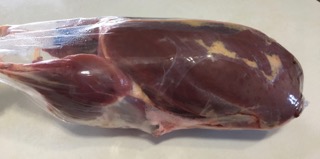
We had a banner year for ducklings…between the two sets we incubated (with varying success) and two clutches incubated by broodies (much more successfully), we went from 5 total to 30+. Seriously.
The second set of eggs we incubated resulted in 5 total hatching – 4 drakes and a single duck. With each hatch, we know there’s a likelihood of at least half being male; unfortunately, not that many drakes are necessary for a self-sustaining flock. Consequently, the “extra” drakes must either be rehomed or culled.
The crux of it is that we have too many drakes now. As they reach about 5-6 months of age, their hormones kick into high gear and they begin chasing and grabbing the ducks.
Their advances are generally unwelcome at this point, as the ducks seem to mature more slowly. We understand: the boys are just being boys. They can’t help themselves.
We’ve begun “thinning the herd”, starting with two of the most enthusiastic boys. Both were big, handsome drakes. We dispatched them quickly and processed them, saving the gizzards, hearts, and livers, too. Processing your own animals allows you to thoroughly examine them for signs of disease or illness. Internal organs, in particular, can reveal problems that haven’t manifested externally. As expected, though, the drakes were healthy, outside and in.
We used our new shrinkbags to package the dressed-out drakes, which weighed in at around 4 pounds each. Each will provide us with 3-4 delicious, satisfying meals (and duck ramen!). If it were possible – and responsible – we might be inclined to keep all of our drakes…but it’s not, and we choose to eat meat, so we will continue to manage our duck population by judiciously harvesting and appreciating the exceptional food they provide.
